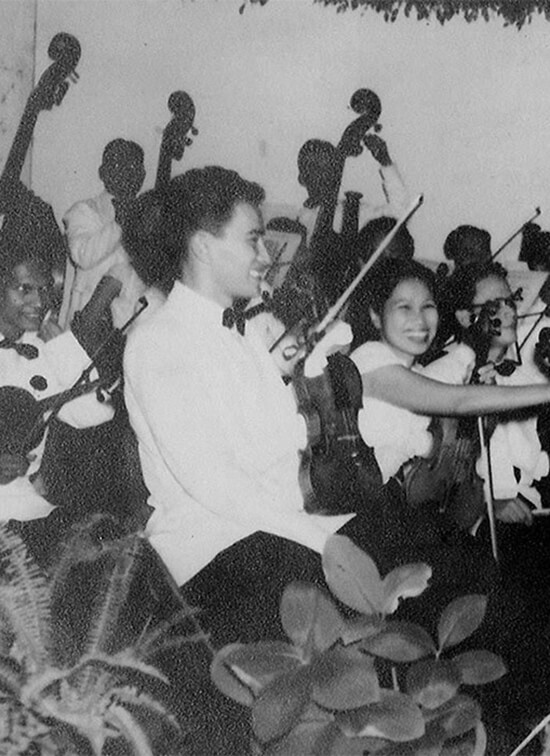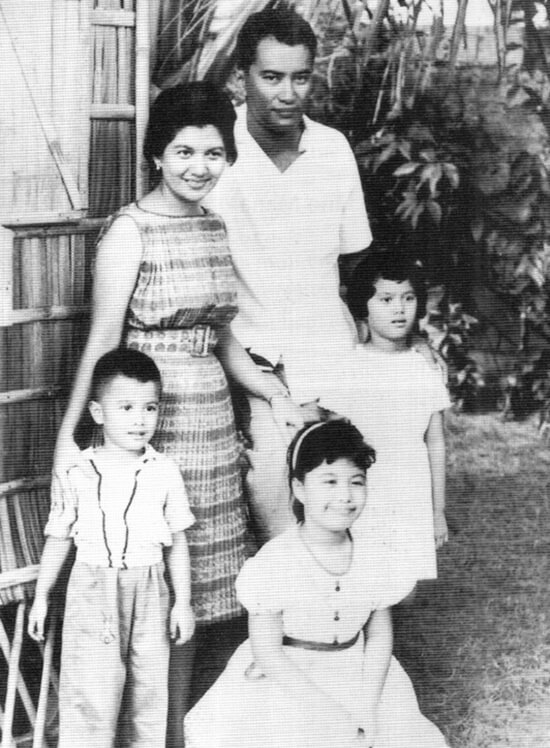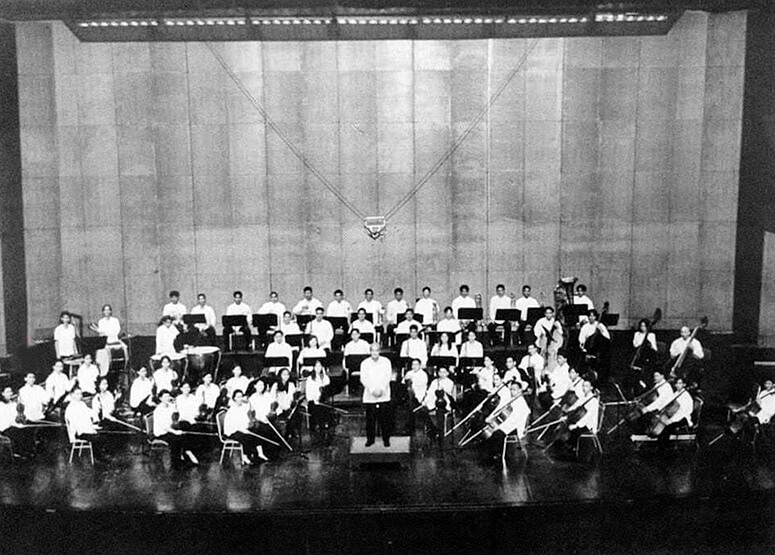The life and times of Maestro Basilio Manalo
Maestro Basilio Manalo’s life revolved around the Manila Symphony Orchestra.
He was born April 14, 1927, just a year after the MSO was founded in 1926 by Alexander Lippay.
One of his first teachers was MSO’s first concertmaster, Ernesto Vallejo, also known as the great violin prodigy of the late 20s and who made waves throughout the 1930s and early 40s until his untimely demise in 1945 at the hands of Japanese marauders.
In his early stint with MSO, Manalo was in the first violin section. But after he returned from Juilliard studies in the 50s. he became concertmaster of the MSO. Hence, Manalo was a natural MSO recruit.

The violinist grew up in a Nueva Ecija house surrounded by music. His maternal grandfather, Don Felino Cajucom, the first civil governor of Nueva Ecija, had a daily regimen that included listening to opera and symphonic music at a certain time of the day.
As a boy, Manalo recalled seeing the late conductor Lippay training his students dressed in his sando (undershirt).
Manalo was MSO soloist under Lippay in Bach’s A Major Concerto, Brahms’ D Major Concerto and Paganini’s D Major Concerto.
To Manalo, conductor Dr. Herbert Zipper was almost like a surrogate father. “My musical career took off because of him. I studied counterpoint with him. He was an extraordinary teacher. He taught slowly but thoroughly,” he said.

In his teens, Manalo, nicknamed Billy, often went up to Baguio. There a neighbor, future wife Cecilia Ledesma Mapa of Bacolod, heard him play Abelardo’s Cavatina accompanied by his maternal grandmother, Leonor Mur, a piano graduate of the Liceo de Barcelona.
Mrs. Manalo told this writer before she passed away, “I often saw Billy in those Baguio tea musicals, but I also saw him quite often in the MSO concerts where he was in the first violin section. The pieces that stay in mind to this day are Abelardo’s Cavatina and Rossini’s Barber of Seville, transcribed for the violin.”
After his Juilliard studies where he played the Brahms concerto with the MSO at the Rizal Memorial Coliseum under Dr. Zipper, Manalo and Cecilia Ledesma Mapa of Bacolod got married.

Along with the PREDIS (Philippine Research for Developing Instrumental Soloists) of Sister Mary Placid of St. Scholastica’s College, he helped revive the MSO when it nearly breathed its last during the final appearance of Dr. Zipper at the Met in the late ’80s.
Manalo’s son, Ino Manalo, now executive director of the National Commission on Culture and the Arts, told the STAR the July 24 Met tribute to his late father was organized by his father’s pupils.
Added Manalo: “That tribute is a testament to how he is remembered—as a teacher who was fully devoted to his students. He watched over his students’ development and made sure they were on the right path regarding their careers. He gave his all: bringing students to our farm for the summer so he could teach them intensively and organizing music camps in Makiling, taking students on concert tours of the country.”
The Manalos grew up in a household awash with music. Ino admits, “We sometimes took music for granted as it was always around us. We only learned to love music as adults. But we were all interested in art in our own way. Thanks to our mom (Cecilia Ledesma Mapa Manalo) we grew up with paintings, books, artists who came for dinner and sometimes stayed with us. But no one became a musician. The closest to music was my brother Ico who helped organize a small orchestra in Negros. I became a writer and so did my sister’s daughter, Nicola Sebastian. She was awarded the Palanca for the Short Story.”
Still Ino can fully relate to his father’s advocacies now that he is in charge of a government agency also taking care of artists. “I learned from him that one had to see the complete picture when working with the arts. He always made sure that the different needs of the orchestra were addressed. It was not enough that the orchestra was able to play; one had to ensure that the instruments were well maintained. He helped fund the studies in Germany of a violin maker to make sure that there would be someone to maintain instruments in Manila. He guarded the orchestra music pieces like a lion as he said that they were essential in the life of an orchestra. To this day when I hear his students discussing repertoires, the first question would always be: my piyesa ba? We understood that this was what he had to do. When my mom donated a sum to jump-start the renewed Manila Symphony, we knew that was what my father wanted.”
Ino likes to think his father was a well-rounded man. “Aside from being a full-time musician and orchestra conductor, he managed a sugar farm, played golf and badminton like a champion, made model planes. He could do large sum divisions in his head and could analyze the political scene expertly. But despite his well-known gruff exterior he also took his children to Japan to see the ancient gardens.”
The July 24 tribute at the Met is a gathering of former students of Maestro Manalo and their students to honor his legacy as a revered figure in Philippine music. It will highlight the musical life and works of Maestro Basilio Manalo, a video testimonial of some of his students, and musical performances.
Gina Medina Perez, who was concertmaster during the time the MSO was reborn, said the tribute is organized by the Filipino String Teachers Association (FSTA) in partnership with the Cultural Center of the Philippines, Metropolitan Theater and the National Commission for Culture and the Arts (NCCA).
The highlights of the tribute will be performed by the string ensemble headed by Arturo Molina (Manalo’s trusted friend and colleague). One of Manalo’s last students, Diomedes Saraza, Jr., will also perform.
Medina will always remember Manalo as a dedicated teacher. “He was committed, passionate about teaching in the highest standard. By example, he was the one who taught me work ethic. He brought to the Philippines the Galamian way of teaching and playing, which he learned in Juilliard from the eminent pedagogue himself.”
Medina was around during the formative years of the revived MSO. “I saw how excited Sir Billy was when he finally got the MSO orchestra music collection from the Met. He was waving his hands at Sr. Mary and beaming with victory as he went up the stairs to the music department of St. Scholastica’s College. Getting permission to reestablish the Manila Symphony Orchestra was a grueling process and he took on the challenge.
When the MSO was reborn, and after helping get donations for the organization, he gave the baton to Arturo Molina in a ceremonial event to mark the delegation of leadership. Sir Billy is a pillar in the history of music in the Philippines. He raised the teaching and performing standards in the country by example. He was also instrumental in improving the cello standard in the Philippines when he sponsored Wilfredo Pasamba to train the young cellists in the Philippines.”
Ino recalls being riveted by an orchestra rehearsal with his father. “Yes, listening to my father I began to perceive that what moves us is not so much the need to order one’s internal world so that it resonates with the external. What really moves us is the need to make the connection between the inside and the outside. It is the need to merge with the past, present and future in which we live, the need to touch and be touched. This is, I suppose, the insight which centuries of painters, musicians, weavers and potters have come to understand—that ultimately, art is really just another one of the ‘many masks of love.’”
Maestro Manalo died March 28, 2008 at age 80.
* * *
The July 24, 6 p.m. tribute to Maestro Basilio Manalo at the Met is undertaken by the Filipino String Teachers Association in cooperation with the Cultural Center of the Philippines and National Commission for Culture and the Arts. Admission is free.


